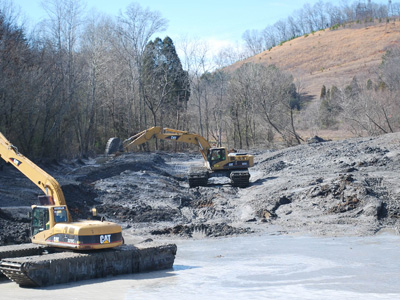
Remember this? It’s the coal ash spill in Kingston, Tenn., in December 2008. When an earthen dam gave way, more than 1 billion gallons of gray, toxic sludge inundated hundreds of acres.
It prompted the Environmental Protection Agency to find out how many sites out there are holding the toxic leftovers — coal ash — from the nation’s power plants.
Now, the results are in. The EPA says there are 600 of them spread around 35 states. Four of the sites are in Minnesota.
Black Dog Generating Plant, Burnsville
Has four holding ponds, but only one has small amounts of coal ash, according to Xcel Energy. The company says it could find no evidence the dikes at the ponds were built with the help of a professional engineer. There has been no federal or state inspections.
Riverside Generating Plant, Minneapolis
It’s in the process of being converted from coal to a gas-fired facility. A pond on the site will be eliminated this year or next. It contains a small amount of ash particles, the company said.
Sherburne County Generating Plant, Becker
The plant uses three ponds for coal ash from three plants. One is being closed and capped and the water is being pumped out. They were designed by a professional engineer, and the Department of Natural Resources inspected the operation in June 2008. The company says it has found no evidence of spills to water in the last 10 years, and two released to land over that time.
All of these are owned by Xcel. Here’s the documentation submitted to the EPA.
Minnesota Valley Generating Plant, Granite Falls
Xcel reported the plant is not operating and hasn’t generated “significant” amounts of coal ash for more than 10 years. When it does, four ponds are used. It says it could not locate records of a professional engineer being used, nor records of the ponds being inspected. It says it knows of no known spills but says the ponds were flooded in the Minnesota River floods of 1997 and 2001 and coal ash could have been carried away.
Here’s the documentation on this plant.
There is no regulation of the residue produced by coal-burning power plants.
In a 2007 article, Scientific American said the the waste produced by coal plants “is actually more radioactive than that generated by their nuclear counterparts. In fact, the fly ash emitted by a power plant–a by-product from burning coal for electricity–carries into the surrounding environment 100 times more radiation than a nuclear power plant producing the same amount of energy.”
